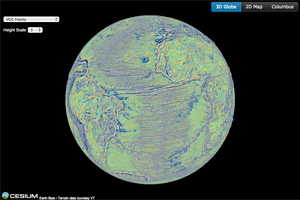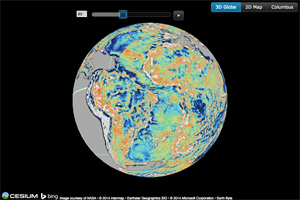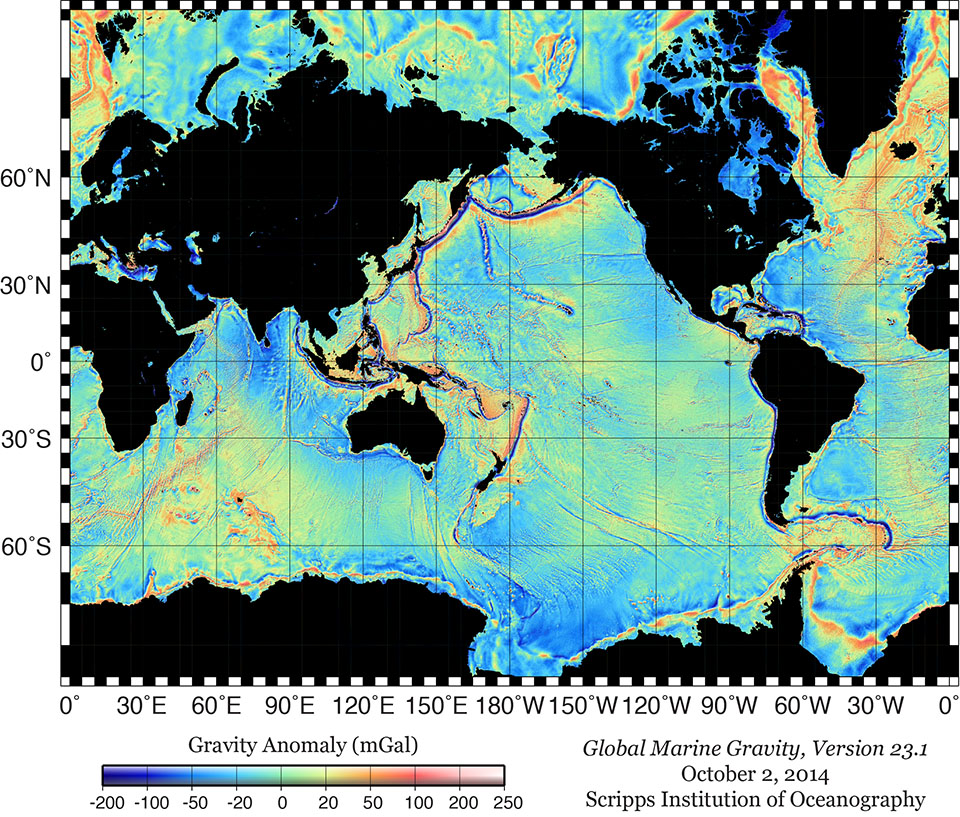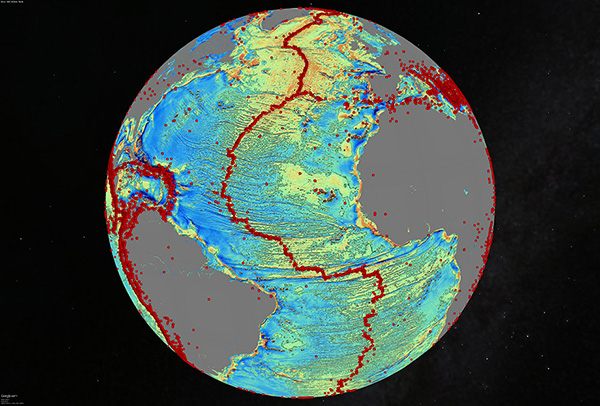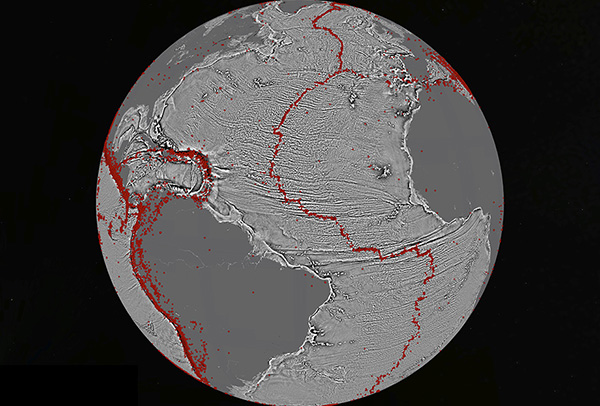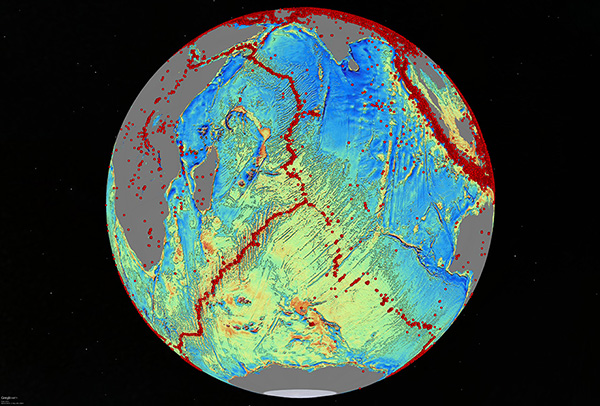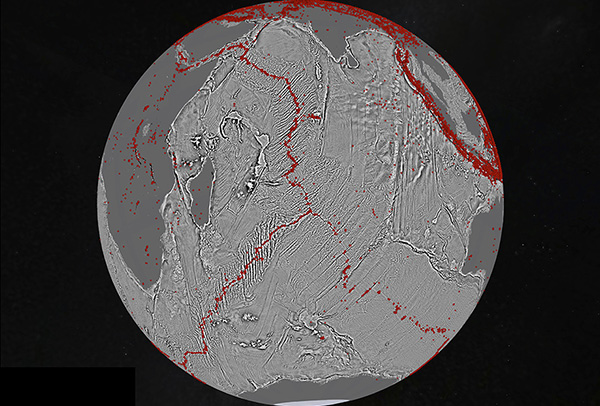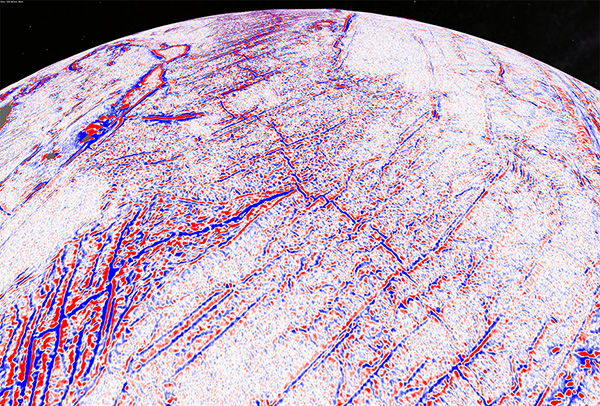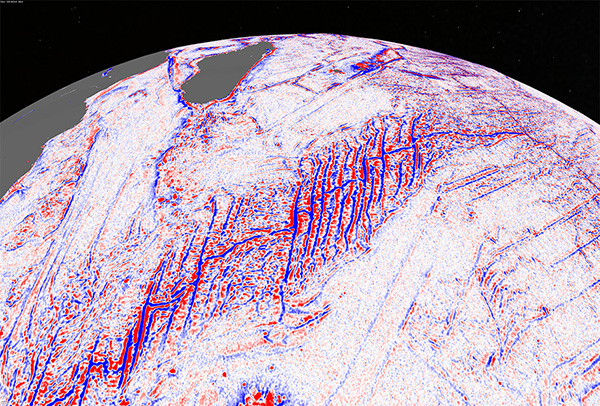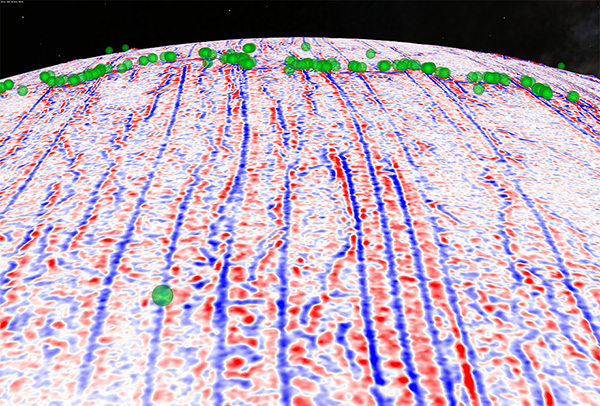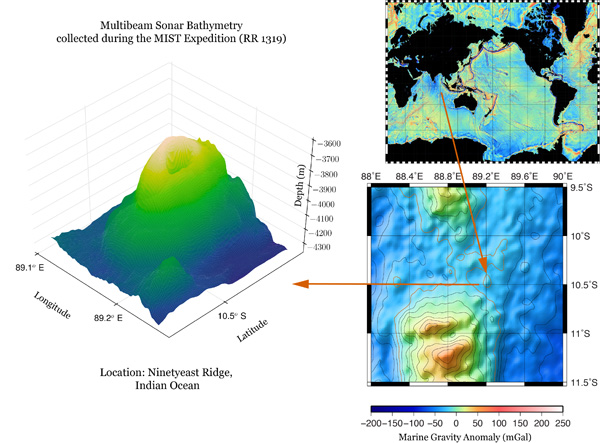Exploring Ocean Tectonics from Space
Data on slight variations of the pull of gravity over the oceans are recorded with satellite altimetry, and are then combined to map the seafloor globally.
Get the Marine Gravity Map:
Global Data Grids
Google Earth Overlays
GPlates Web Visualization
Reference:
Sandwell, D. T., R. D. Müller, W. H. F. Smith, E. Garcia, R. Francis, New global marine gravity model from CryoSat-2 and Jason-1 reveals buried tectonic structure, Science, Vol. 346, no. 6205, pp. 65-67, doi: 10.1126/science.1258213, 2014. Author information and acknowledgments.
Links to Related Material and Publicity
Send us feedback
KML Files for Visualization in Google Earth
Download Google Earth software for viewing KML overlays on a globe.
Gridded Data for Research Use
These grid files may be read using GMT software. Here is an example on how to plot these grids.
Gravity Anomaly and Vertical Gravity Gradient
GPlates Web Visualization
These cloud-based tools are provided courtesy of Dietmar Müller on the GPlates Web Portal and require a WebGL-enabled browser. For more information on these visualizations, please visit the EarthByte page.
Navigating the Visualization
- left click + drag:
- (3D View) rotates the camera around the globe
- (2D, Columbus View) translates the camera around the map surface
- right click + drag
- zooms the camera in and out
- middle wheel scrolling
- also zooms the camera in and out
- middle click + drag
- (3D View) rotates the camera around the point on the surface of the globe
- (3D View) rotates the camera around the globe
- (2D, Columbus View) translates the camera around the map surface
- zooms the camera in and out
- also zooms the camera in and out
- (3D View) rotates the camera around the point on the surface of the globe
Marine gravity model of the North Atlantic (10 mGal contours). Red dots show locations of earthquakes with magnitude > 5.5 and they highlight the present-day location of the seafloor spreading ridges and transform faults. This gravity information shows the details of the plate tectonic history of the rifting of these continents including the subtle signatures of fracture zones that are currently buried by sediment.
Marine gravity model of the Central Indian Ocean (10 mGal contours). Red dots show locations of earthquakes with magnitude > 5.5 and they highlight the present-day location of the seafloor spreading ridges and transform faults. The image is centered at the Indian Ocean Triple Junction where three major tectonic plates meet (African plate – left; Indo-Australian plate – right; Antarctic plate bottom. This region of the Indian Ocean is very poorly charted and includes the search area for the Malaysian flight MH370 that was lost March 8, 2014.
Vertical gravity gradient (VGG) model of the Indian Ocean Triple Junction. The image is centered at the Indian Ocean Triple Junction where three major tectonic plates meet (African plate – left; Indo-Australian plate – right; Antarctic plate bottom.
Vertical gravity gradient (VGG) model of the Southwest Indian Ridge. This is the slowest spreading ridge on the Earth and has large fracture zone signatures that record the rifting and spreading between Africa and Antarctica.
Vertical gravity gradient (VGG) model of the southern mid-Atlantic Ridge. Earthquakes with magnitude > 5.5 are shown as green dots and highlight the current location of the spreading ridges and transform faults. The large fracture zone signatures record the rifting and spreading between South America and Africa.
In January 2014, an international team of researchers on a voyage aboard the R/V Roger Revelle in the Indian Ocean mapped a previously uncharted seamount using high-resolution sonar. The scientific expedition had just finished collecting sediment cores from the seafloor at the Ninetyeast Ridge in the Indian Ocean when the ship track on the way back to port was adjusted slightly based on the potential location of the seamount as indicated by marine gravity.
The high-resolution multibeam sonar bathymetry data show that the newly charted seamount is not very prominent and rises just over 600 m from its base. However, it is wide enough to be detected in the gravity signal.
The MIST Expedition (cruise id: RR1319) was led by graduate students from Scripps Institution of Oceanography joined by participants from the Earth Observatory of Singapore. It was made possible by the University of California Ship Funds program.
The figure above was generated using a combination of GMT, Matplotlib, and a color palette courtesy of Matteo Niccoli.
Basics of Satellite Radar Altimetry
- Exploring the Ocean Basins with Satellite Radar Altimetry (SIO)
- Radar Altimetry Tutorial (CLS / CNES / NASA)
- Satellite Altimetry Applications: Geodesy and Geophysics (AVISO+)
- Ocean Bathymetry and Plate Tectonics (SIO)
Satellite Radar Altimetry Missions
Related Scientific Publications
- Science perspective article: C. Hwang, and E. T. Y. Chang, Seafloor secrets revealed, Science, Vol. 346, no. 6205, pp. 32-33, doi: 10.1126/science.1260459, 2014.
- Sandwell, D. T., E. Garcia, K. Soofi, P. Wessel, and W. H. F. Smith, Towards 1 mGal Global Marine Gravity from CryoSat-2, Envisat, and Jason-1, The Leading Edge, 32(8), 892899. doi: 10.1190/tle32080892.1, 2013.
- Garcia, E., D. T. Sandwell, and W.H.F. Smith, Retracking CryoSat-2, Envisat and Jason-1 radar altimetry waveforms for improved gravity field recovery, Geophysical Journal International, doi: 10.1093/gji/ggt469, 2014
- Sandwell, D. T., and W. H. F. Smith, Global marine gravity from retracked Geosat and ERS-1 altimetry: Ridge Segmentation versus spreading rate, J. Geophys. Res., 114, B01411, doi: 10.1029/2008JB006008, 2009.
David T. Sandwell
Scripps Institution of Oceanography (SIO), La Jolla, CA, 92093, USA
Satellite Geodesy group
R. Dietmar Müller
School of Geosciences, The University of Sydney, New South Wales, Australia
EarthByte group
GPlates Web Portal
Walter H. F. Smith
National Oceanic and Atmospheric Administration (NOAA) Laboratory for Satellite Altimetry, College Park, MD, 20740, USA
Emmanuel S. Garcia
Scripps Institution of Oceanography, La Jolla, CA, 92093, USA
Richard Francis
European Space Agency (ESA): European Space Research and Technology Centre (ESTEC), Keplerlaan 1, 2201AZ Noordwijk, The Netherlands
CryoSat-2 mission
Acknowledgments
The satellite altimetry data from CryoSat-2 is being provided by ESA, while data from the Jason-1 mission was provided by the National Aeronautics and Space Administration (NASA) and the Centre national d'études spatiales (CNES). We also incorporated data from the following missions: Envisat (ESA), ERS-1/2 (ESA), and Geosat (US Navy).
This work was supported by the National Science Foundation (NSF), the Office of Naval Research (ONR), the National Geospatial-Intelligence Agency (NGA), and ConocoPhillips.
Give us Feedback
For issues related to this page (broken links and such), you may reach Soli Garcia by e-mail (esg006@ucsd.edu) or Twitter (@heyearth).
For technical issues related to the marine gravity grids, contact David Sandwell (dsandwell@ucsd.edu).
Publicity
Media Contact
SIO Communications Office: Mario Aguilera, Phone: +1-858-534-3624, Email: scrippsnews@ucsd.edu
Press Releases
These are the official publicity materials from the authors' institutions:
Online Media Coverage
View a compilation of articles discussing our paper on Storify.
Here are some selected stories:
Last updated: March 30, 2015, Institute of Geophysics and Planetary Physics, Scripps Institution of Oceanography, Univ. of California, San Diego.









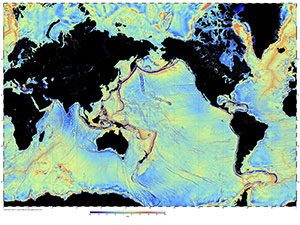 Global map, marine gravity anomaly
Global map, marine gravity anomaly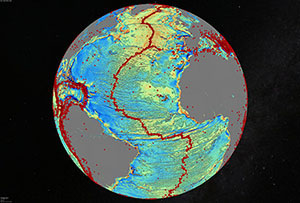 North Atlantic, marine gravity anomaly
North Atlantic, marine gravity anomaly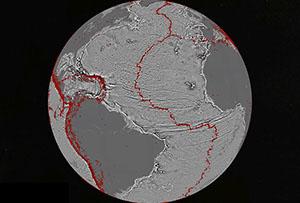 North Atlantic, vertical gravity gradient
North Atlantic, vertical gravity gradient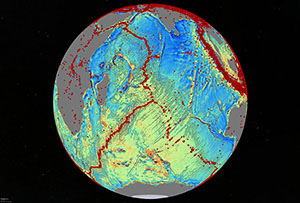 Central Indian Ocean, marine gravity anomaly
Central Indian Ocean, marine gravity anomaly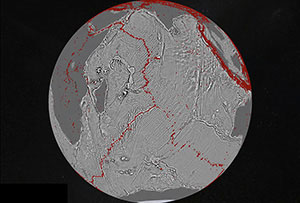 Central Indian Ocean, vertical gravity gradient
Central Indian Ocean, vertical gravity gradient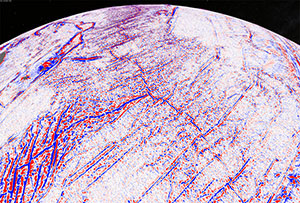 Indian Ocean Triple Junction, vertical gravity gradient
Indian Ocean Triple Junction, vertical gravity gradient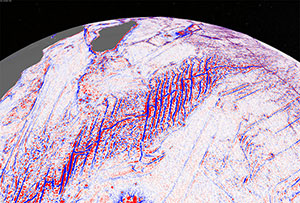 Southwest Indian Ridge, vertical gravity gradient
Southwest Indian Ridge, vertical gravity gradient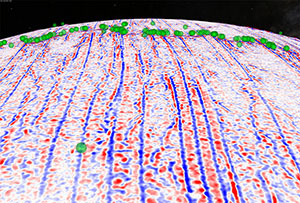 Southern Mid-Atlantic Ridge, vertical gravity gradient
Southern Mid-Atlantic Ridge, vertical gravity gradient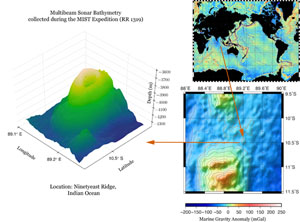 How marine gravity from satellites enables discovery aboard ships
How marine gravity from satellites enables discovery aboard ships